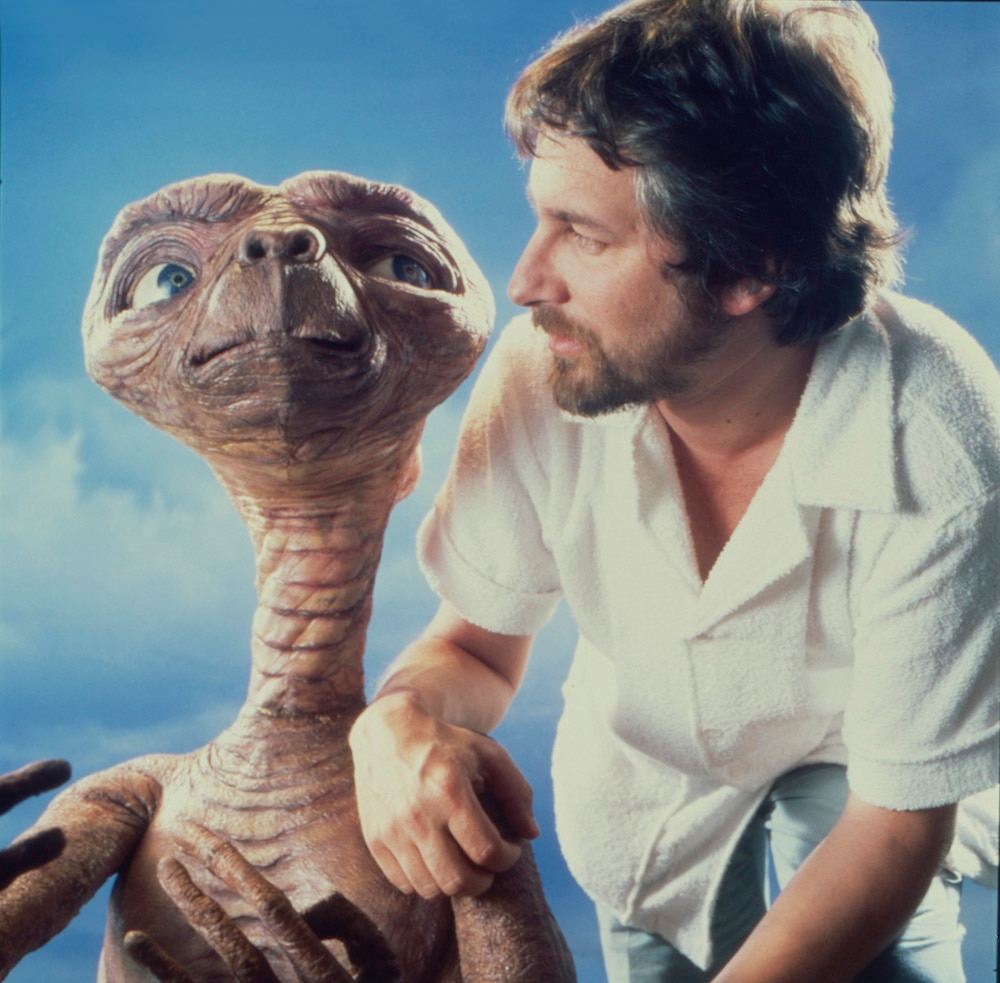Create a free profile to get unlimited access to exclusive videos, sweepstakes, and more!
The shared story roots of 'E.T the Extra-Terrestrial' and 'Poltergeist'
These two films share more than Steven Spielberg's name in the credits.

The summer of 1982 has long since become legendary for the sheer volume of classic genre films it produced, but as it was happening, that magical season had another name among news outlets: The Spielberg Summer.
Yes, though we now see 1982 through the long shadows of everything from Blade Runner to Star Trek II: The Wrath of Khan, the summer of '82 was noteworthy in the moment because it almost simultaneously gave us two of Steven Spielberg's most successful and most beloved films. Poltergeist, which he produced and co-wrote, arrived first, on June 4. E.T. the Extra-Terrestrial, which he directed and crafted the story for, arrived just one week later. The two films are in different genres, feature different casts, and thanks to the presence of horror master Tobe Hooper on Poltergeist, also have different directors at the helm, but both became massive hits over the course of that summer, cementing Spielberg's place as a pop culture force unto himself.
Though they share a certain tonal DNA, Poltergeist and E.T. are ultimately very different films connected by their release dates and Spielberg's creative influence. But that's not all they share. Thanks to another, earlier Spielberg hit, Poltergeist and E.T. are forever connected by shared roots in the same story, one that Spielberg was able to transform from an unproduced concept into two different hit films.
The story begins in the wake of the runaway theatrical success of Close Encounters of the Third Kind. Though Spielberg was working on other projects, namely his ultimately disappointing World War II comedy 1941 and the mega-popular adventure blockbuster Raiders of the Lost Ark, Columbia Pictures was eager to capitalize on the success of Close Encounters with a sequel. Spielberg, seeing what happened when he stepped away from sequel development in the Jaws franchise, decided he at least wanted to make an effort to be involved this time around.
Drawing on leftover research from UFO eyewitness accounts he did for Close Encounters, Spielberg began to envision a dark companion piece to his more hopeful alien film, a small-scale story of a family who'd be terrorized by a group of alien creatures who surrounded and attempted to invade their home. Titled Watch the Skies, he called in Piranha screenwriter John Sayles to work on the project, and the name eventually shifted to Night Skies. The idea was that Spielberg would produce the film while directing his next project over at Universal Pictures, where he was under contract. Sayles went to work on the script, while visual effects legend Rick Baker started designing alien creatures for the film.
According to David Hughes' book The Greatest Sci-fi Movies Never Made, though, Spielberg started to have second thoughts about the project while he was shooting Raiders of the Lost Ark. He grew less interested in the idea of malevolent aliens and more interested in a thought he'd had back while he was shooting Close Encounters, about the small alien creature from the film's finale that he'd dubbed "Puck."
"I suddenly thought, 'Wait a second, what if that little creature never went back to the ship? What if the creature was part of a foreign exchange program?'" Spielberg recalled at the TCM Film Festival earlier this year. "And that was the feeling that I had. What if I turned my story about divorce into a story about children, a family, trying to fill the great need [of family]?"
So, while on location with Raiders in Tunisia, Spielberg merged a previous idea for a semi-autobiographical film about his own life as the child of divorced parents with his alien idea. He pitched this new story to screenwriter Melissa Mathison, then Harrison Ford's girlfriend, who had come to visit the set. Though she was initially reluctant to take on a new writing job, Mathison was eventually moved by the story that would become E.T., and agreed to script it based on Spielberg's pitch. Spielberg eventually brought Mathison's script to Columbia in lieu of Night Skies. The studio ultimately passed on the project, so Spielberg brought it to Universal as his next directorial effort. They accepted, and got a massive hit out of it.
But Spielberg didn't let Night Skies fizzle out completely. While he didn't want to make a malevolent alien film, he did like the idea of a family under siege from dark forces, and opted to change the aliens into ghosts. He also wanted an opportunity to work with Tobe Hooper, a director he'd liked ever since The Texas Chain Saw Massacre, who'd been a contender to make Night Skies. Hooper would later claim that significant pieces of Poltergeist's ghost story came from his own interests and research, but however the story came together, Hooper eventually signed on to direct, while Michael Grais and Mark Victor were brought in to work on the script. Poltergeist would go on to become the eighth highest-grossing film of 1982, while E.T. would take the number one spot.
And that's the story of how a single scrapped sequel to Close Encounters of the Third Kind gave us the Spielberg Summer.
E.T. the Extra-Terrestrial is currently streaming on Peacock. Poltergeist is streaming on HBO Max and Shudder.


























